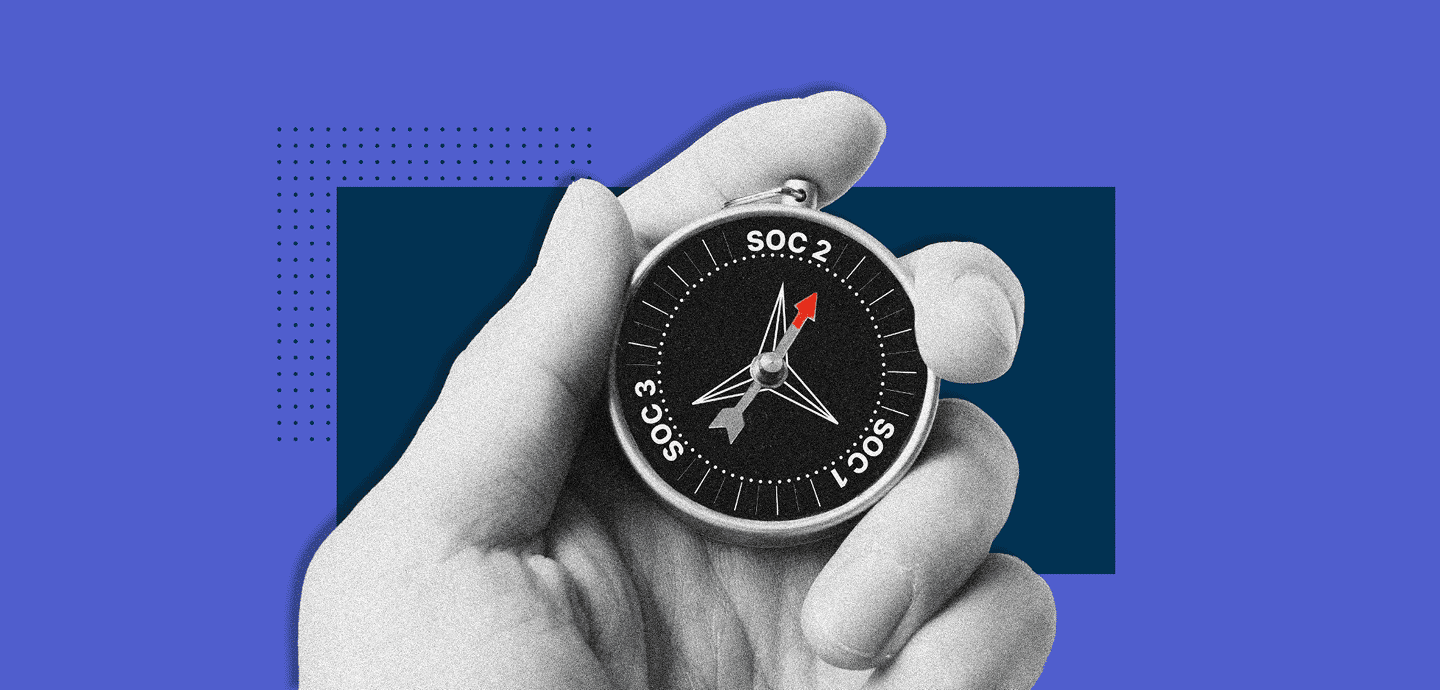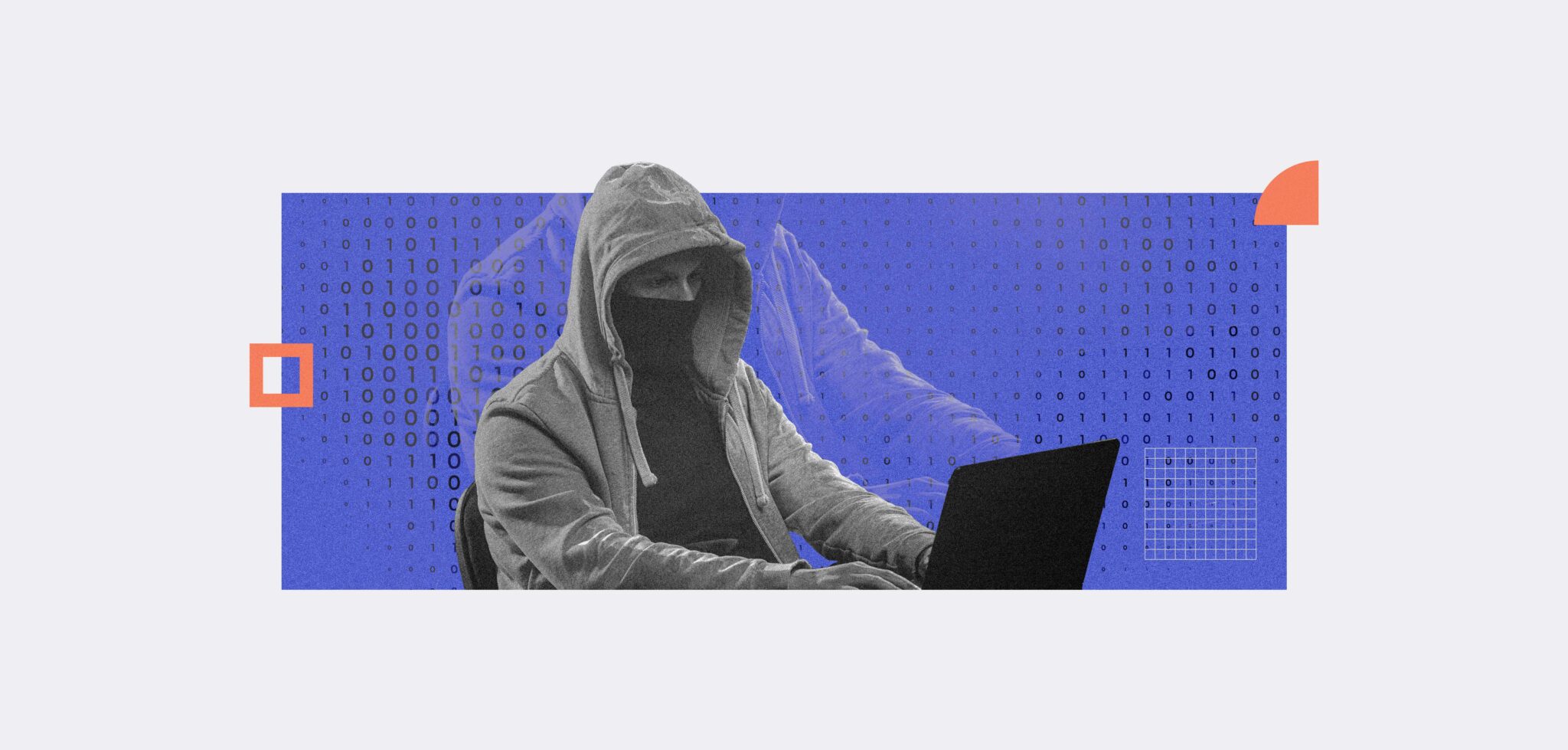
Demystifying SOC 2 Compliance: A Comprehensive Guide for Businesses
Table Of Contents:
- 1) Understanding SOC 2 Compliance
- 2) Differentiating SOC 2 from SOC 1 and 3
- 3) SOC 2 Trust Service Criteria (TSC) Explained
- 4) Key Benefits and Advantages of SOC 2 Compliance
- 5) The SOC 2 Audit Process
- 6) Implementing SOC 2 Controls
- 7) SOC 2 Compliance Checklist
- 8) Maintaining SOC 2 Compliance
- 9) Your SOC 2 Success Story Starts Here
In today’s digital landscape, trust is the currency that fuels successful transactions. With data breaches and cyber threats on the rise, organizations are under immense pressure to showcase their dedication to safeguarding their customers’ sensitive information. That’s where SOC 2 compliance steps in as a vital framework for establishing trust and confidence.
But let’s face it: SOC 2 compliance can feel like navigating a labyrinth of complexities for many businesses. The jargon, the requirements, the endless considerations—it can all be overwhelming.
Fear not! In this blog, we’re here to unravel the mysteries surrounding SOC 2 compliance. We’ll break down the definitions, demystify its purpose, and guide you through the necessary steps to achieve and maintain SOC 2 compliance.
Understanding SOC 2 Compliance
SOC 2 compliance refers to the Service Organization Control 2 framework developed by the American Institute of Certified Public Accountants (AICPA). It’s a security framework that defines how companies should manage, process, and store customer data based on the Trust Services Categories (TSC). There are five categories to adhere to: security, availability, processing integrity, confidentiality and privacy. We’ll cover those in more detail later.
Unlike many frameworks, SOC 2 compliance is unique to each company. Organizations choose the relevant trust service categories applicable to their business and then design how they will meet the requirements of those categories instead of using a prescriptive list of controls. As a result, every organization’s security practices will look different, meaning they can achieve SOC 2 compliance with custom policies and processes relevant to their business’s operations.
By undergoing SOC 2 compliance, organizations can provide tangible evidence of their robust data protection and cloud security practices through SOC reports. While SOC 2 compliance is not a mandatory regulatory requirement, it holds immense significance as a widely accepted global compliance benchmark. Adopting SOC 2 guidelines showcases an organization’s commitment to maintaining high data security standards and establishes stakeholder trust.
Differentiating SOC 2 from SOC 1 and 3
SOC 2 is not the only SOC on the block. So, what are the differences, and which one do organizations need?
SOC 1
SOC 1 is for organizations whose internal security controls can impact a customer’s financial statements. Think payroll, claims, or payment processing companies. SOC 1 reports can assure customers that their financial information is being handled securely.
A SOC 1 report can either be Type 1 or Type 2. A Type 1 report assures an organization suitably designed and placed rules in operation as of a specified date. A Type 2 report provides those assurances and includes an opinion on whether the controls operated effectively throughout a period of time.
SOC 2
SOC 2 primarily evaluates information systems’ security, availability, processing integrity, confidentiality, and privacy, making it suitable for organizations that handle sensitive data.
The two types of SOC 2 reports are Type 1 and Type 2. A Type 1 report assesses the design of a company’s security controls at a specific time. In contrast, a Type 2 SOC report assesses those controls’ effectiveness over time.
SOC 2 reports are private, which means they are typically shared only with customers and prospects under an NDA.
SOC 3
SOC 3 provides a simplified version of SOC 2. It’s a general-use report that organizations can use as a marketing tool and provide to prospective customers.
SOC 2 Trust Service Criteria (TSC) Explained
Understanding the five Trust Service Categories will help shape your organization’s security practices and compliance efforts. While security is the only mandatory criterion for SOC 2, many companies choose to include additional categories based on their industry and data processing requirements.
Regardless of the criteria being evaluated, auditors will thoroughly assess the effectiveness of your controls, your responsiveness to risks and incidents, and the clarity of your internal communication regarding risks, changes, and priorities.
Security
Security forms the foundation of any SOC 2 compliance framework. It must be included and is therefore often referred to as the ‘common criteria’. It focuses on protecting systems and data against unauthorized access, both physically and logically.
Robust security controls, such as multifactor authentication, encryption, and regular security assessments, ensure sensitive information’s confidentiality, integrity, and availability.
Availability
Availability ensures that systems and services are accessible and usable when needed. This criterion examines an organization’s ability to prevent and respond to incidents that may disrupt its operations.
Redundant infrastructure, disaster recovery plans, and monitoring tools help maintain uninterrupted services, minimizing downtime and potential financial losses.
Organizations whose customers are concerned about downtime should select this criterion.
Processing Integrity
Processing integrity guarantees the accuracy, completeness, and validity of data processing. Organizations must have controls to ensure data is processed correctly and within defined parameters.
Examples of controls include data validation, error detection, and reconciliation procedures. By maintaining data integrity, organizations build trust and confidence in their operations.
Organizations should include this criterion if they execute critical customer operations such as financial processing, payroll services, and tax processing.
Confidentiality
Confidentiality ensures that sensitive information remains protected from unauthorized disclosure. Organizations must implement strict access controls, employee training programs, and encryption methods to safeguard confidential data.
Confidentiality controls also encompass contractual agreements and non-disclosure agreements to maintain the confidentiality of client information.
Organizations that store sensitive information protected by non-disclosure agreements (NDAs) or have customers with specific requirements about confidentiality should include this criterion.
Privacy
Privacy focuses on collecting, using, retaining, and disclosing personal information. Organizations must adhere to relevant privacy laws and regulations, such as the General Data Protection Regulation (GDPR) or the California Consumer Privacy Act (CCPA).
Implementing privacy controls involves obtaining consent for data collection, providing individuals with the right to access their information, and implementing measures to secure personal data.
Organizations that store PII such as healthcare data, dates of birth, and social security numbers or have customers holding this type of information should include this criterion.
No matter which criteria you’re evaluating, auditors will look at how effectively your controls are operating, how quickly you respond to risks or incidents, and how clearly you communicate about risks, changes, and priorities within your organization.
Key Benefits and Advantages of SOC 2 Compliance
- Enhanced Data Security: SOC 2 compliance provides a robust framework for identifying and mitigating potential risks to sensitive data. Organizations can ensure the confidentiality, integrity, and availability of their systems and data by implementing and maintaining the necessary controls.
- Competitive Edge and Market Differentiation: Achieving SOC 2 compliance establishes your organization as a trustworthy and secure partner and gives you a competitive advantage. It demonstrates your commitment to data protection and can serve as a differentiating factor when customers choose between service providers.
- Strengthened Customer Trust: SOC 2 compliance assures customers that their data is handled with the highest level of security and confidentiality. By meeting the rigorous requirements of SOC 2, organizations can build trust and instil confidence in their customer base, leading to stronger relationships and long-term loyalty.
- Streamlined Vendor Management: SOC 2 compliance is an essential criterion when evaluating potential vendors or partners. By selecting SOC 2-compliant partners, organizations can minimize the risk of data breaches and ensure that their data is in safe hands.
- Regulatory Compliance Alignment: Many industry-specific regulations, such as HIPAA or GDPR, require organizations to implement appropriate controls and safeguards. SOC 2 compliance helps align with these regulatory requirements, streamlining the overall compliance process.
The SOC 2 Audit Process
Understanding the SOC 2 audit process is crucial for organizations aiming to meet the stringent requirements of this widely recognized compliance framework. Let’s explore the critical stages of the SOC 2 audit process and shed light on essential considerations for successful compliance.
-
Define Your Scope
As part of the SOC 2 audit, assessing various aspects of your business, including your tech stack, data flows, infrastructure, business processes, and people, is crucial.
Discuss the scope with your SOC 2 auditor beforehand to gather the necessary information and ensure that it aligns with your customers’ needs.
Determining which Trust Service Categories (TSC) to include is vital. While security is mandatory, other categories, such as availability, confidentiality, processing integrity, and privacy, may or may not apply to your company. Consider these categories carefully to understand what is necessary to protect your information and demonstrate compliance.
-
Communicate Processes Internally
Effective internal communication is critical throughout the SOC 2 audit planning process. Engage with executive management and department leaders to ensure they understand their responsibilities in implementing SOC 2 controls and providing evidence to the auditor.
Clearly communicating the audit’s purpose, timeline, and expectations will best prepare employees for their obligations before, during and after the audit and ensure ongoing compliance with the framework.
• Perform a Gap Assessment
Conducting a gap assessment, also known as a readiness assessment, is an essential initial step in your SOC 2 journey. Evaluate your existing procedures, policies, and controls to assess your current security posture and identify any gaps that need to be addressed to meet the applicable criteria of the Trust Services Criteria.
• Remediate Control Gaps
Once the gap assessment is complete, prioritize remediation efforts to address control gaps and ensure compliance with SOC 2 requirements.
Collaborate with your team to review policies, formalize procedures, make necessary software alterations, and integrate new tools and workflows as needed. Closing these gaps before the audit takes place enhances your readiness.
• Monitor and Maintain Controls
After remediating control gaps and implementing the necessary controls to achieve SOC 2 compliance, organizations must establish processes to monitor and maintain the implemented controls continuously. Continuous monitoring is a crucial requirement of SOC 2.
Consider implementing a tool that automates control monitoring and evidence collection, streamlining your ongoing compliance efforts.
• Find an Auditor
Choosing the right auditor is paramount to a successful SOC 2 audit. The right auditor can do much more than conduct your audit—they can help you understand and improve your compliance programs, streamline the process, and ultimately achieve a clean SOC 2 report.
Implementing SOC 2 Controls
As we’ve already established, SOC 2 comprises five trust service criteria (TSC). Within each of these, there are 64 individual requirements. These requirements are not controls. Therefore, SOC 2 controls are the respective systems, policies, procedures, and processes you implement to comply with these SOC 2 criteria.
As a guide, the Security TSC will require around 80-100 controls. However, as you expand the scope of your audit to include additional Trust Service Criteria such as privacy, availability, processing integrity, or confidentiality, each criterion introduces its unique set of requirements. To meet these requirements, your business must design and implement specific controls tailored to satisfy each TSC. It’s crucial to recognize that as you broaden the scope of your audit, additional efforts and measures are necessary to ensure compliance across all relevant criteria.
Let’s delve into critical considerations for successful implementation, including the documentation and policies required and the technical and operational controls to meet SOC 2 compliance.
Documentation and Policies:
Thorough documentation is vital to SOC 2 compliance. Clear policies and procedures enable organizations to demonstrate their data security and privacy commitment. This includes developing a comprehensive information security policy, incident response plan, data classification guidelines, and access control policies. Documenting these protocols ensures transparency and consistency in security practices.
Technical Controls:
Implementing robust security measures such as firewalls, intrusion detection systems, and encryption protocols helps safeguard sensitive data. Regular vulnerability assessments, penetration testing, and secure coding practices further enhance the security posture. Organizations should also ensure the proper configuration and monitoring of systems and secure network architecture.
Operational Controls:
Operational controls encompass the day-to-day procedures and practices that support data security. This includes employee training programs to promote security awareness, background checks, and access management protocols. Regular audits and reviews of user access privileges, system logs, and security incidents help identify and address vulnerabilities promptly. Incident response and business continuity plans are crucial for effective incident management and quick recovery.
Continuous Monitoring and Improvement:
SOC 2 compliance is an ongoing process requiring continuous monitoring and improvement. Regular internal audits and assessments help identify gaps and areas for enhancement. Organizations should establish metrics and key performance indicators to measure the effectiveness of their controls. By conducting periodic risk assessments and staying abreast of emerging threats and industry best practices, organizations can proactively adapt their controls to address evolving security challenges.
SOC 2 Compliance Checklist
Download our SOC 2 compliance checklist, read more and arm yourself with the insight you need to stay ahead of the curve and ensure your organisation is set up for success.
Maintaining SOC 2 Compliance
Maintaining SOC 2 compliance is an ongoing commitment beyond the initial assessment. Organizations must embrace the concept of constant monitoring and continuous improvement to ensure robust data security and adaptability in today’s rapidly evolving digital landscape.
Regular assessments and audits play a vital role in verifying adherence to controls, identifying vulnerabilities, and assessing the effectiveness of security measures. By conducting frequent assessments, organizations can proactively address compliance gaps, strengthen their security posture, and demonstrate a continuous dedication to safeguarding sensitive data.
In addition to regular assessments, incident response and breach notification requirements are critical components of SOC 2 compliance. Prompt and efficient incident response procedures help mitigate the impact of security incidents and minimize potential damage.
Organizations should establish robust incident response plans, including clear escalation protocols, incident detection and containment mechanisms, and well-defined breach notification processes. By promptly addressing incidents and adhering to breach notification requirements, organizations can demonstrate their commitment to transparency and accountability, fostering stakeholder trust.
Another critical aspect of ongoing monitoring and continuous improvement is the proactive approach to addressing evolving requirements in SOC 2 compliance. The digital landscape constantly evolves, with emerging cybersecurity threats and changing regulations. Organizations must stay vigilant and adapt their compliance efforts to address new challenges.
Regularly reviewing and updating controls, policies, and procedures helps ensure that compliance efforts remain relevant and effective. By actively addressing evolving requirements, organizations can stay ahead of the curve, maintain compliance, and protect against emerging risks.
Your SOC 2 Success Story Starts Here
If you’re looking to start your journey to SOC 2 Compliance, ISMS.online can help.
Our compliance platform enables a simple, secure and sustainable approach to data privacy and information management with SOC 2 and over 50 other frameworks, including ISO 27001, NIST, GDPR, HIPPA and more. Realize your competitive advantage today.




